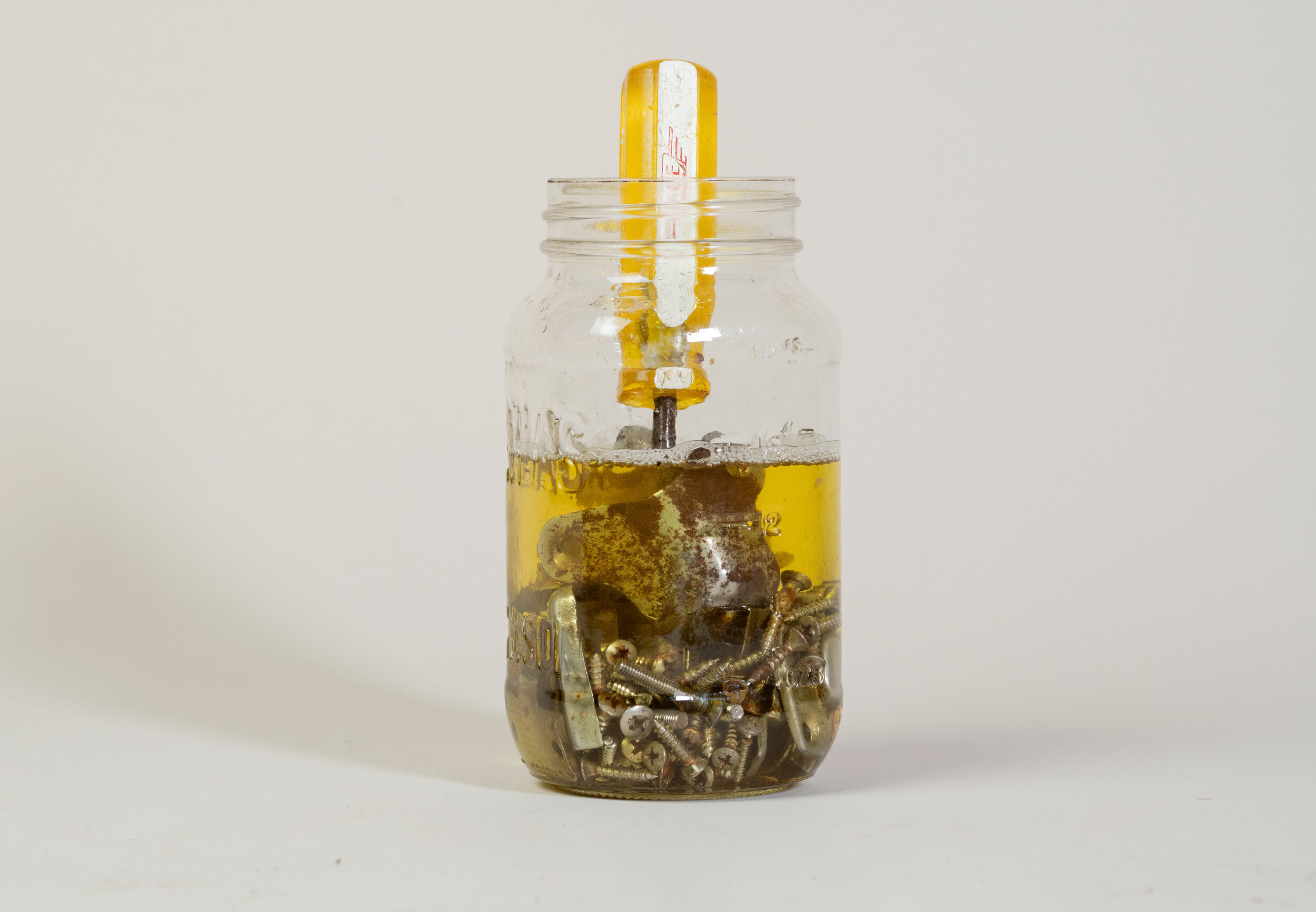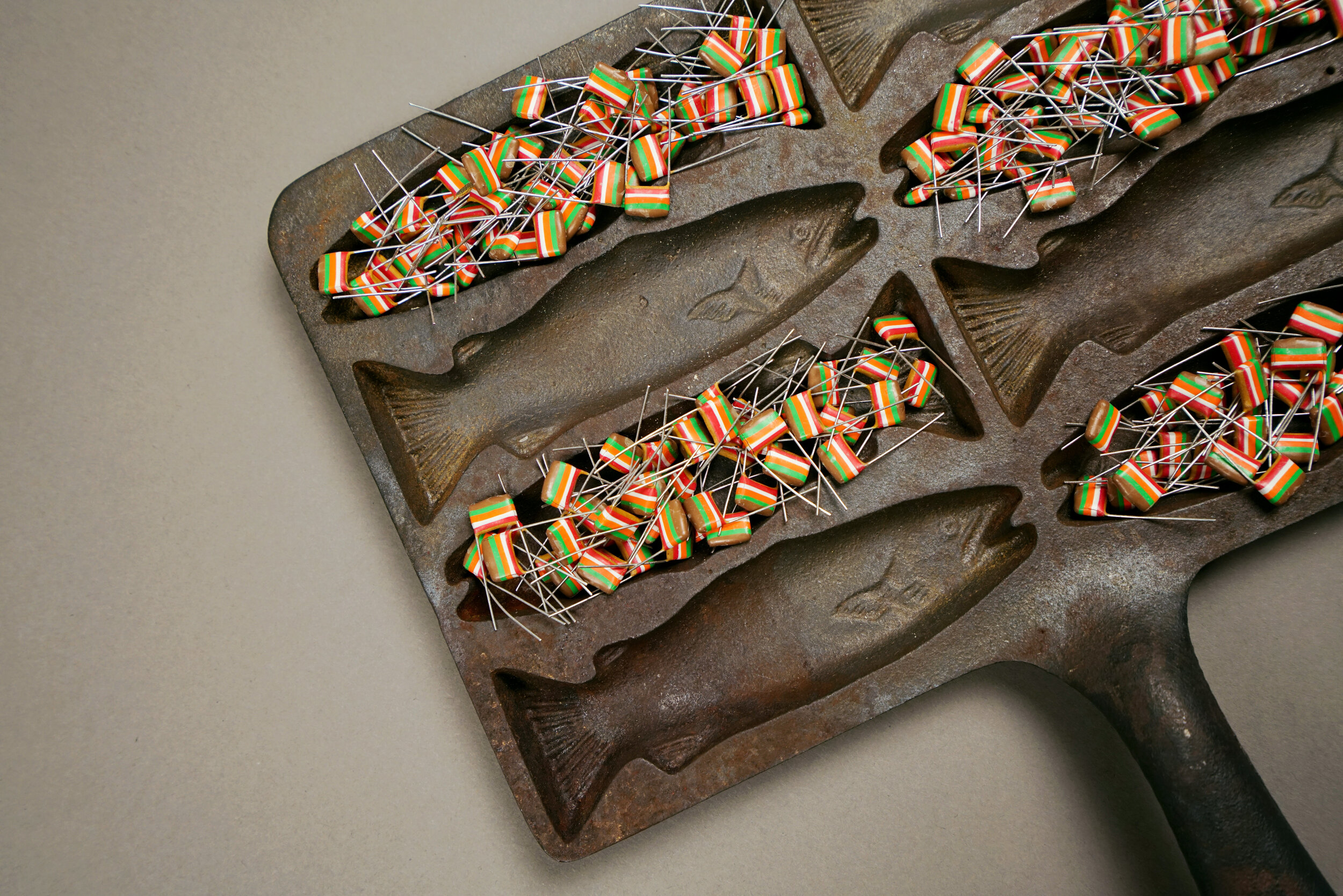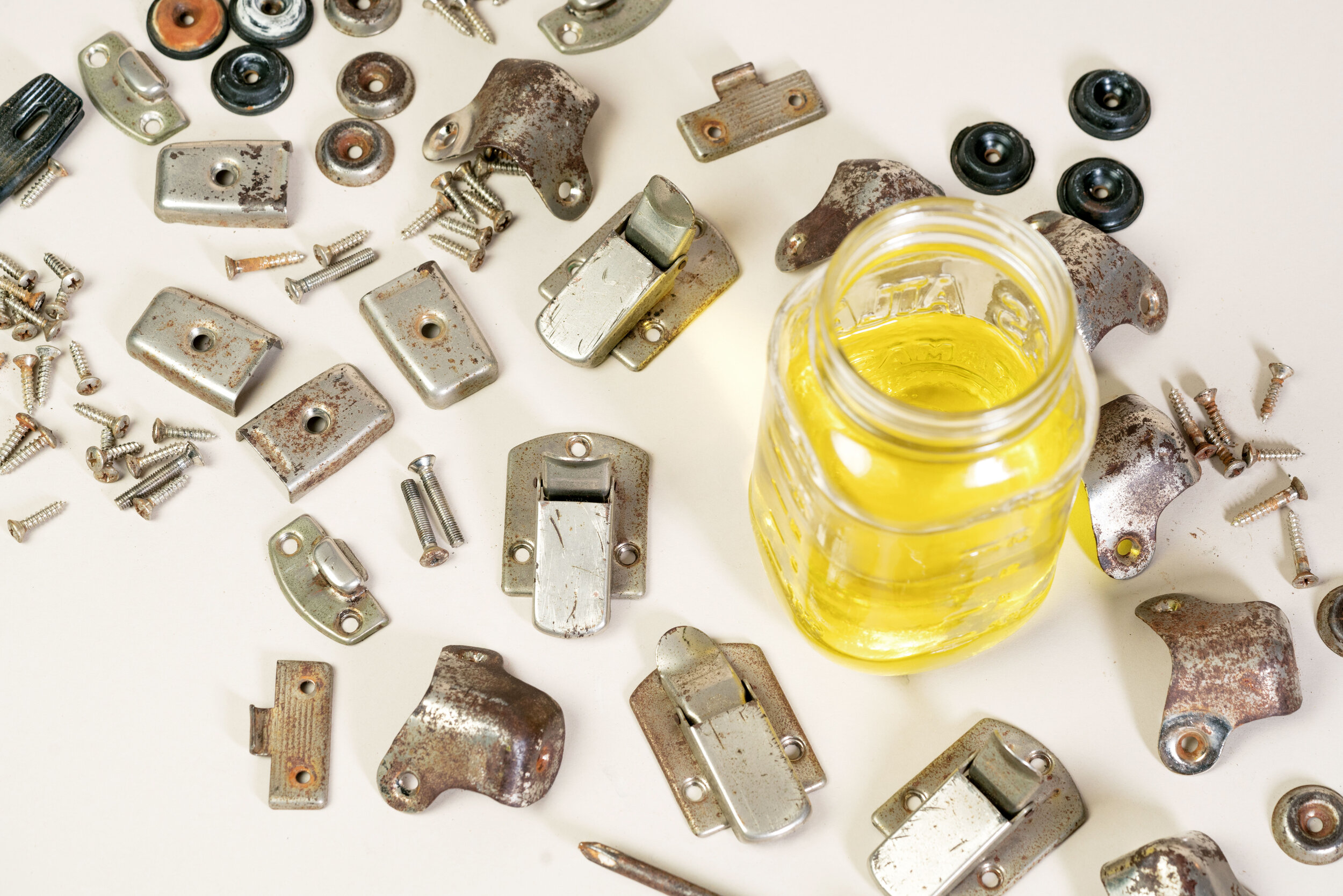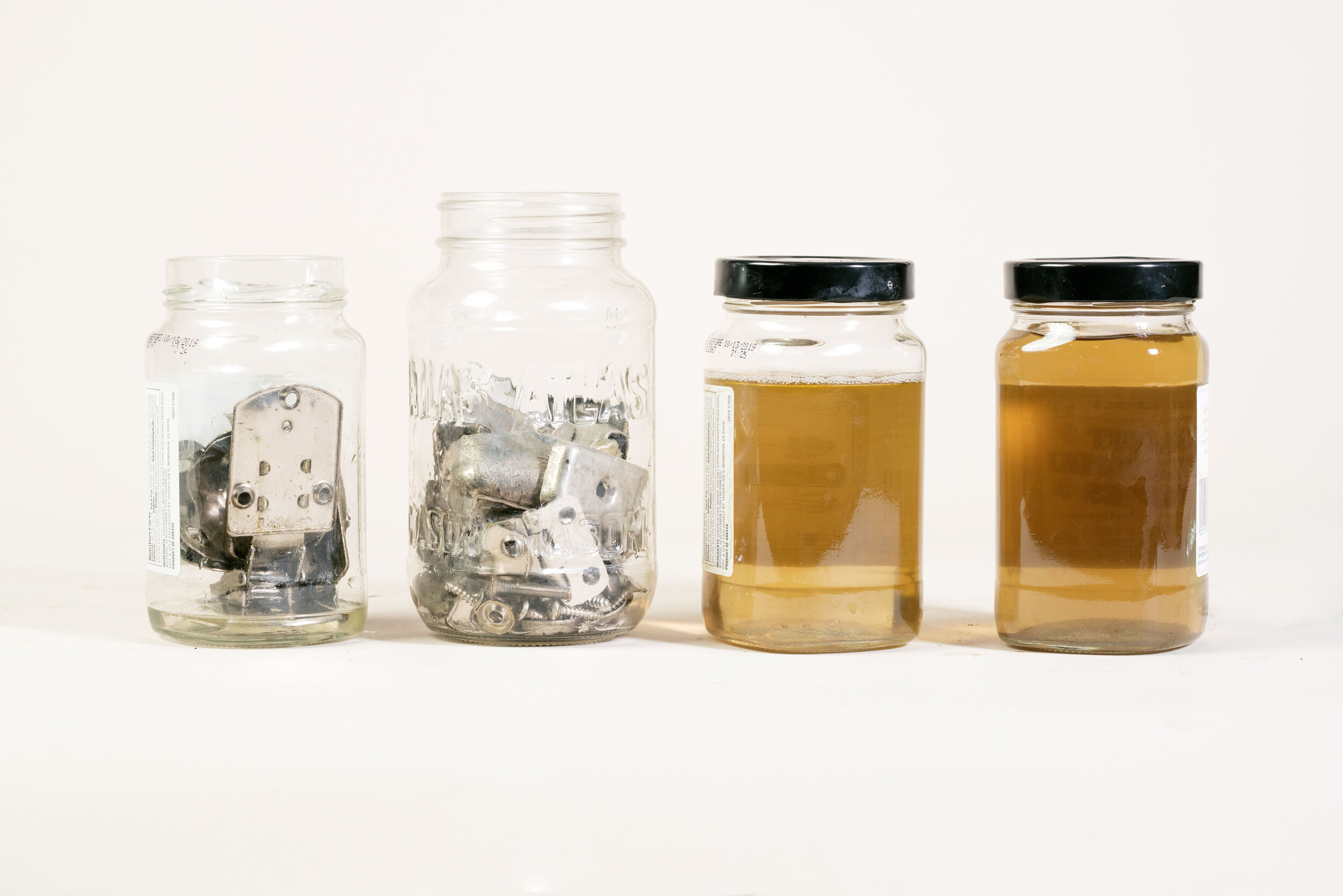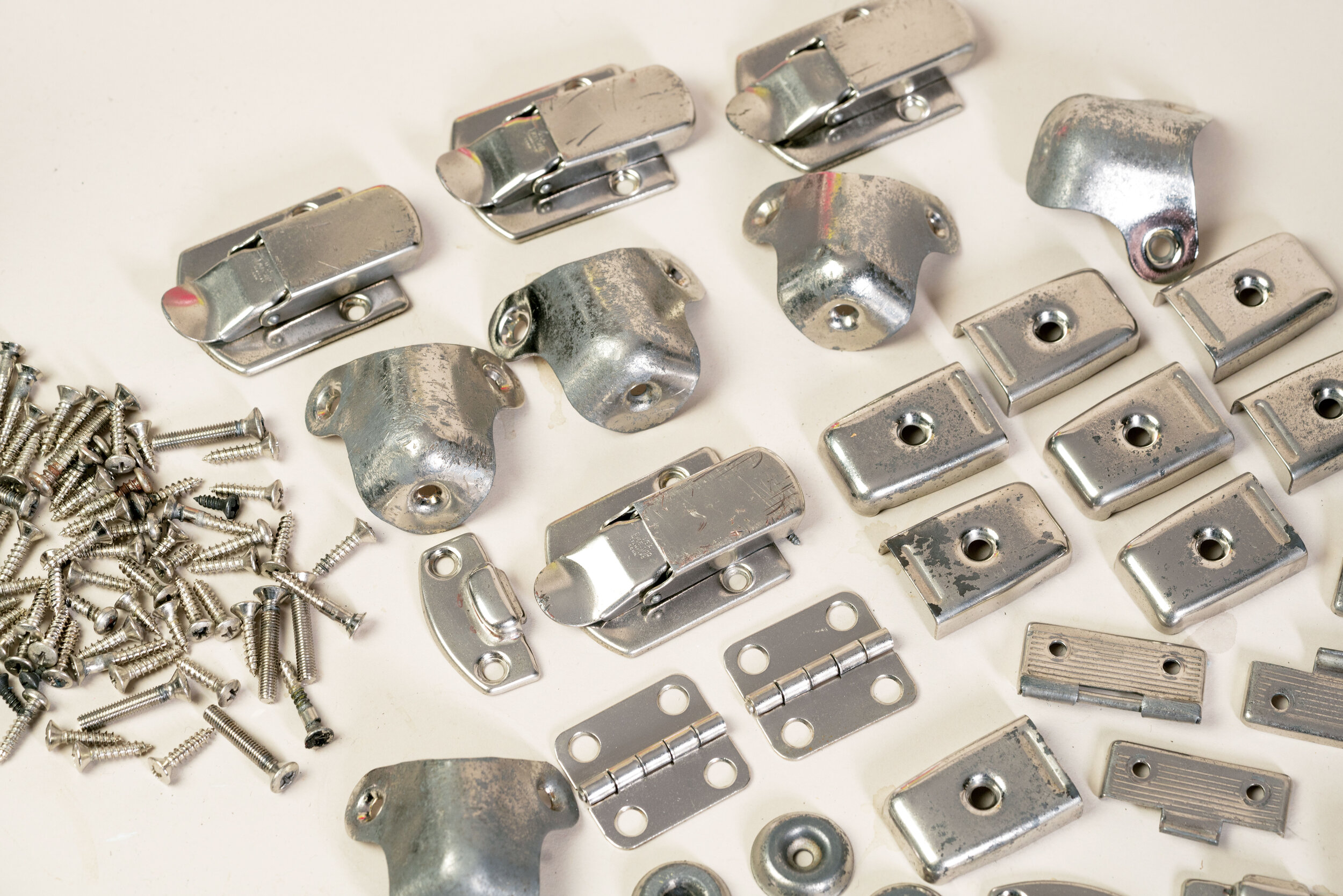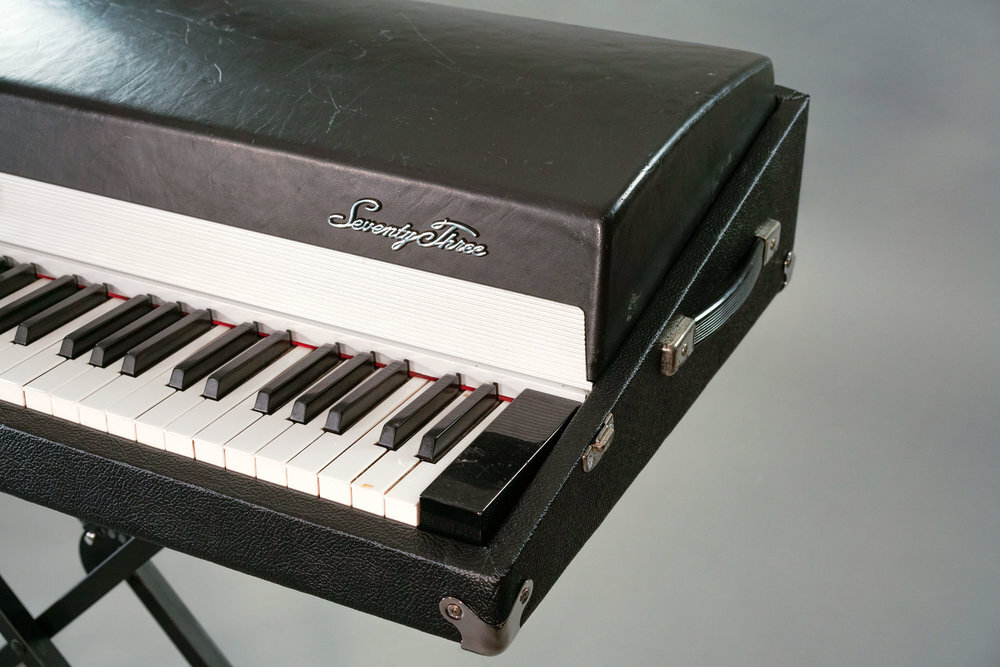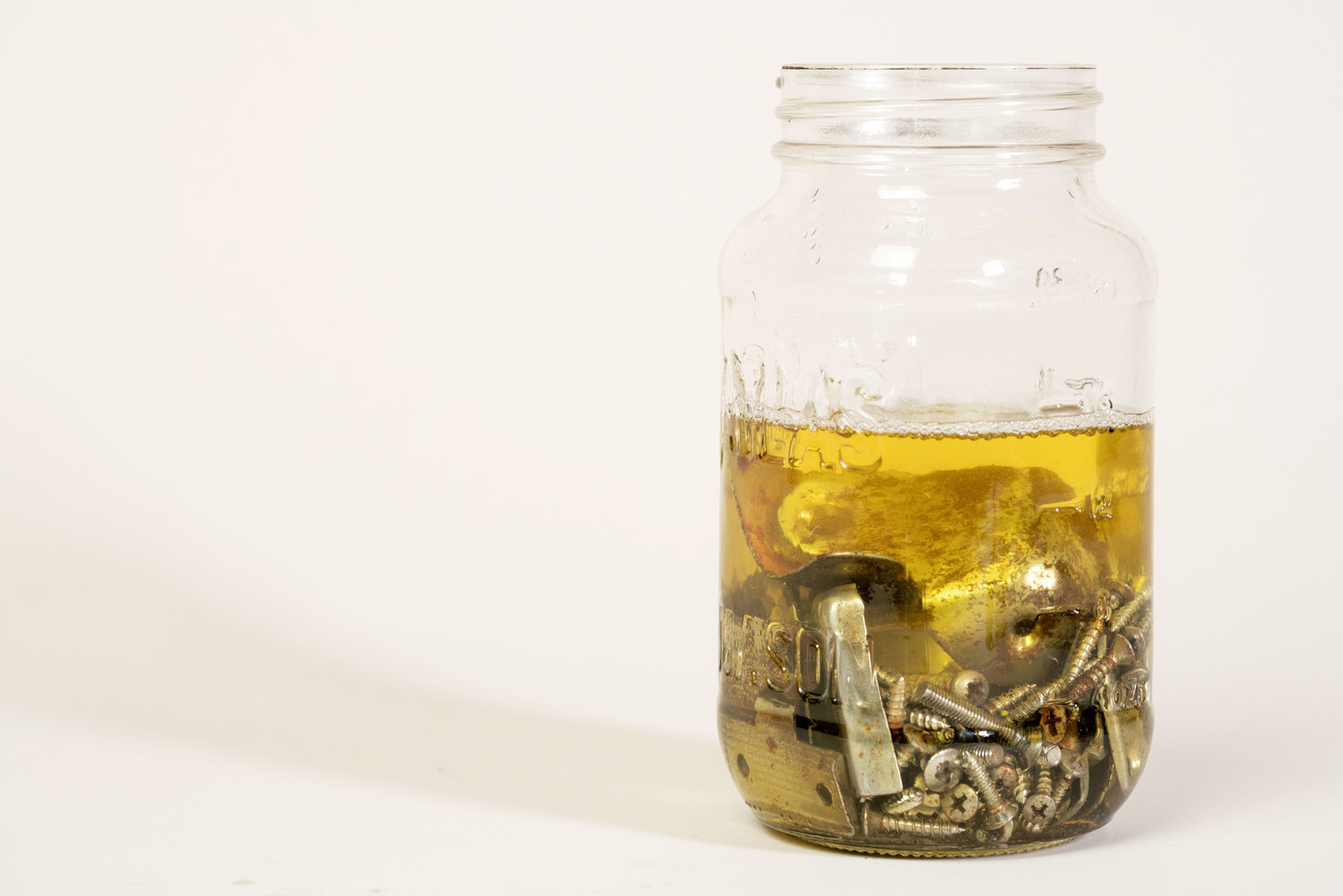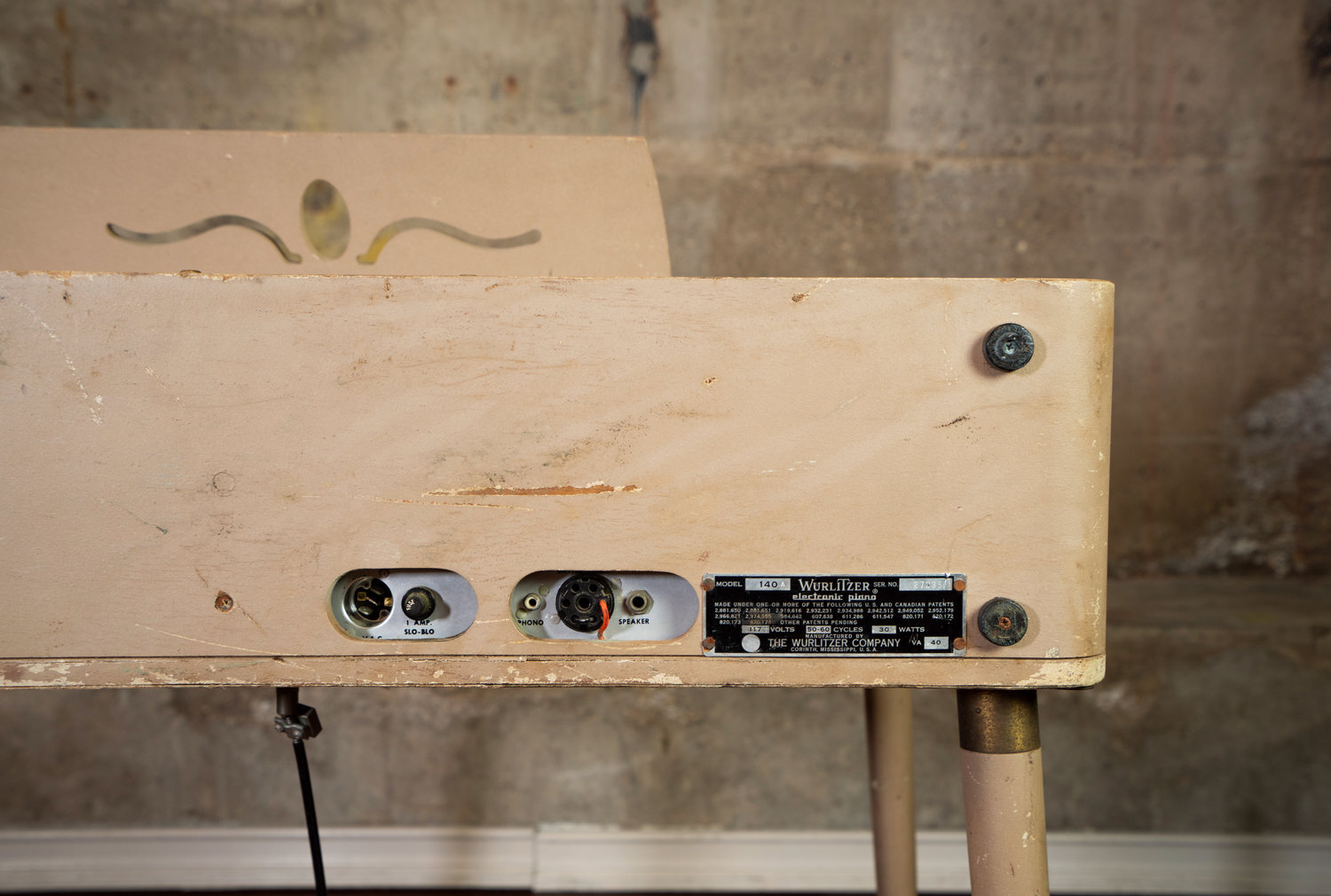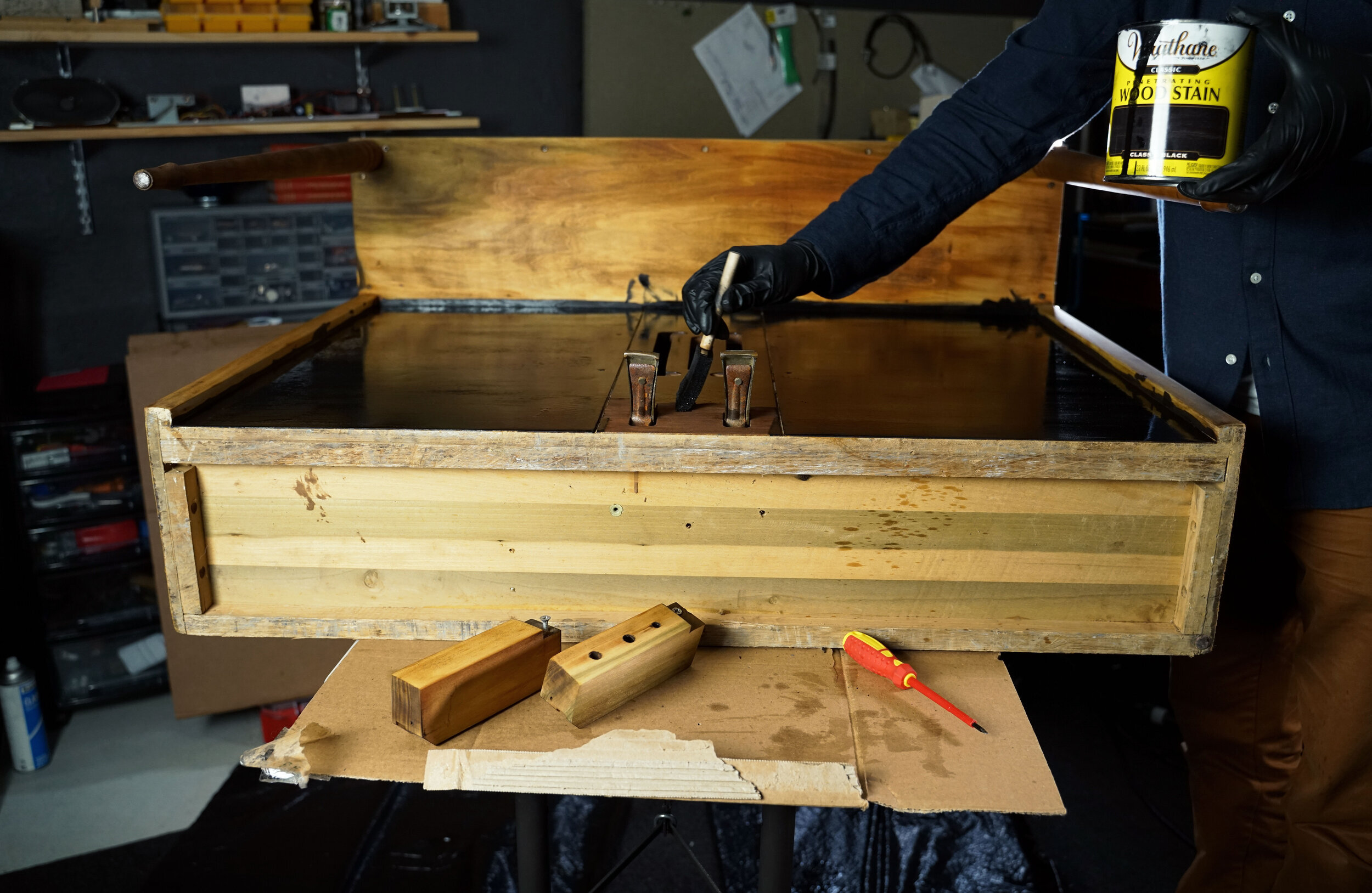De-Rusting Rhodes & Wurlitzer Parts with Evapo-Rust
Rhodes hardware derusting in Evapo-Rust (with a vintage screwdriver for good measure).
When restoring a Wurlitzer, there are a lot of really tedious and time-consuming steps: polishing keys, lubricating action parts, regulating, tuning, etc. We could go on and on — but we won’t, because today we are talking about rust removal, a task that is not on that list. Removing rust is easy and actually borderline fun because it only requires two things: a little Evapo-Rust and a few hours to kill while the product works its magic.
Before we discovered Evapo-Rust, we used to polish the rust off, which was mind-numbing and took forever. Now we just soak our rusty items in Evapo-Rust and move on to the next part of the keyboard that requires attention. It’s almost as good as another pair of hands.
What does Evapo-Rust do? Evapo-Rust does one thing: it removes rust. It does this very thoroughly. However, you should keep in mind that rust is very destructive. It eats metal; it eats finishes. If the rust has penetrated past the finish, you may end up with areas of bare metal after the Evapo-Rust has done its job.
So, anytime you see rust, understand that whatever was originally there — whether it was chrome-plated steel, cast iron, paint, whatever — is already gone. The Evapo-Rust will remove the rust, but it obviously can’t re-paint or re-chrome the newly-derusted area. This is why some rusty items may have dull spots after de-rusting: the Evapo-Rust removed deep pockets of rust to the point where it has exposed bare metal.
We definitely do not mind this: we prefer the look of bare metal to rusty metal. We also prefer to remove all the rust because it can spread to clean metal, or continue to deteriorate to an extent that makes the item nonfunctional. For instance, a rusty screw can easily become a rusted-in-place screw. We’re really only pointing this out to emphasize that Evapo-Rust doesn’t cause the bare metal. Rust caused the bare metal. The only way to avoid de-rusting down to bare metal is to travel back in time and buy that keyboard before the seller stored it in a damp basement for thirty years.
Evapo-Rust will not remove existing paint or chrome. It is extremely gentle on any material other than rust. If Evapo-Rust removes an unexpected part of the finish, that means the area was already compromised by rust. This is very common in painted items, because in many cases the rust has reached metal areas underneath the paint. In this case, the Evapo-Rust will remove the underlying rust, and then the paint will flake off because it is no longer attached to the metal beneath.
If the paint seemed fragile or flaky in the first place, it will probably come off after a prolonged dip in Evapo-Rust. When we de-rust painted items, we usually soak them for just a few minutes. If the paint seems like it’s holding on, we’ll put it back in the Evapo-Rust for a few minutes more. If the paint is starting to peel, we switch tactics and just spot-treat the rustiest areas instead.
If you are de-rusting anything that is super rare or particularly decrepit, you should start by dipping it for just a few minutes at a time. This will ensure that it is removing rust from only the areas that you expect. If the item is larger, spot-test in an inconspicuous area. This is advice we give for all cleaning products.
A cast iron fish pan before it soaked in Evapo-Rust.
The same cast iron pan after soaking in Evapo-Rust.
Evapo-Rust and cast iron. Evapo-Rust is really great on cast iron. Because it is (usually) neither painted nor chromed, de-rusting cast iron basically brings it back to its original state. (Because Evapo-Rust is labeled as food-safe, you can use it on cookware too!) We de-rusted this vintage cast iron pan — all it needs is re-seasoning and it is ready to go. (Note that unseasoned cast iron is prone to flash-rusting, so you’ll need to take care on the final rinse step. We discuss this later in this article.)
Our Usual De-Rusting Ritual
The two things that we de-rust the most are Wurlitzer legs and screws. Because Wurlitzer legs are so big, de-rusting them requires a little bit of preparation, which we have discussed in another article. Screws are more representative of the things that we usually de-rust — i.e., little things that are easy to drop in a jar — so we’ll start with them.
De-rusting screws is super easy: just put them in a jar, pour in some Evapo-Rust, close the jar, and wait an hour or two for the de-rusting to complete. When the object is de-rusted, it should be rinsed with water. And that’s it!
Screws are actually so easy to de-rust that we usually dip them whether or not they’re rusty enough to deserve it. If we’re taking something apart, and we need to store the screws for a few hours, leaving them in a jar of Evapo-Rust keeps them safe and cleans them up at the same time.
Our De-Rusting Tips
Choose an appropriate jar. Evapo-Rust only works when it comes into contact with the object. If the area is covered up for some reason, it won’t de-rust thoroughly. So, for the most efficient de-rusting, it is important that you do not crowd the jar with too many screws.
Of course, in the real world, we usually have way too much rusty hardware for the number of jars that we have available. So:
We shake the jar frequently, to move things around and therefore expose more areas to Evapo-Rust, and
Once objects in the jar finish de-rusting, we remove them. This allows the rest of the objects to have more surface area exposed to Evapo-Rust
An alternative to the jar is to arrange the items in one layer in a shallow dish. However, you need to make sure that you keep the whole thing covered — for instance, in plastic wrap. We prefer jars because they can be tightly sealed with a lid. It is also easy to decant leftover Evapo-Rust from the jar and save it for later. These things are discussed in following sections.
For awkwardly shaped objects — for instance, the Rhodes corner pieces — you can alternatively wrap them in paper towels soaked with Evapo-Rust. Then, wrap them with a layer of plastic wrap. This is the system that we use to de-rust Wurlitzer legs.
Close the jar tightly. If you do not seal your Evapo-Rust container, all the liquid inside will Evapo-Rate. (Sorry; it had to be said.) This is bad because:
The object will only de-rust if it spends a prolonged time in contact with wet Evapo-Rust. If the Evapo-Rust evaporates before de-rusting is complete, de-rusting will obviously stop and you’ll need to add more product for the process to continue.
Evapo-Rust is reusable! If you allow it to evaporate, you are wasting product.
Once you are finished de-rusting, you can save the leftover Evapo-Rust for next time. As the solution fills with more removed rust particles, it will become cloudy and reddish in color. However, it will continue to effectively remove rust until it has turned black.
To preserve leftover Evapo-Rust, remove the de-rusted objects and reseal the jar. Allow the sediment to settle to the bottom of the container. Then, leaving behind as much sediment as possible, decant the Evapo-Rust into a clean container (or even its original container).
How long does Evapo-Rust take to remove rust? Evapo-Rust usually takes a few hours to de-rust objects completely. However, in our experience, most objects can be safely left in Evapo-Rust indefinitely with no adverse effects. We have successfully left many things in Evapo-Rust overnight. In fact, many objects benefit from a longer soak. Most of our objects accumulated rust over 30 or more years — why not take a full 12 hours to reverse it?
Note that Evapo-Rust works faster in warmer temperatures. Our shop is usually on the cold side, so our items probably take longer than average to de-rust. If you can bring Evapo-Rust up to room temperature, or warm it in the sun first, it de-rusts faster.
Because Evapo-Rust is so gentle, most items do not need constant supervision. But whenever we are de-rusting something that we are unfamiliar with, or any object with peeling paint, we check on it frequently. As stated earlier, paint will lift if it has been compromised by rust — this is just Evapo-Rust doing its job, but there are certain items that we are just not ready to subject to such a thorough amount of de-rusting.
Applying Rust-Block to a jar of newly de-rusted screws.
When finished, rinse with water (or more Evapo-Rust). When we are finished de-rusting, we remove any excess Evapo-Rust by rinsing the object with water. However, for short-term rust protection, you can alternatively rinse the object with clean Evapo-Rust.
Some objects are prone to flash-rusting: for instance, de-rusted cast iron. De-rusting cast iron removes all the seasoning, so the bare metal is totally unprotected. If you rinse it with water, it will often immediately start rusting right before your eyes. To avoid this, rinse the cast iron and then immediately start seasoning it before the water has even dried.
If you can’t season your cast iron right away (or if seasoning is irrelevant because the object in question is not cookware), you should rinse the object with more Evapo-Rust. This will provide short-term protection. For long-term protection, use a rust inhibitor such as Evapo-Rust Rust-Block.
If your item does flash rust, no problem: just dip it in Evapo-Rust again. Flash rusting is usually superficial and does not take very long to remove.
Further Reading
Browse all of our articles on restoring vintage gear. Or, click on an image below.

